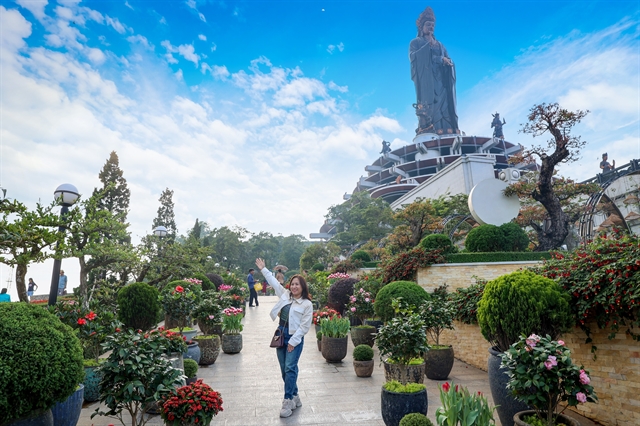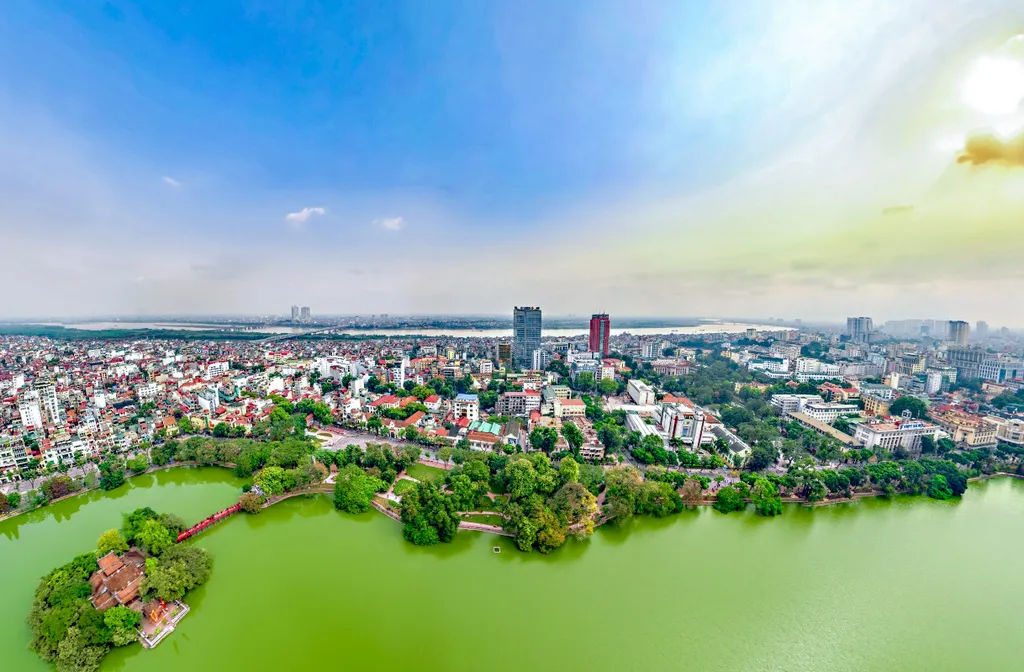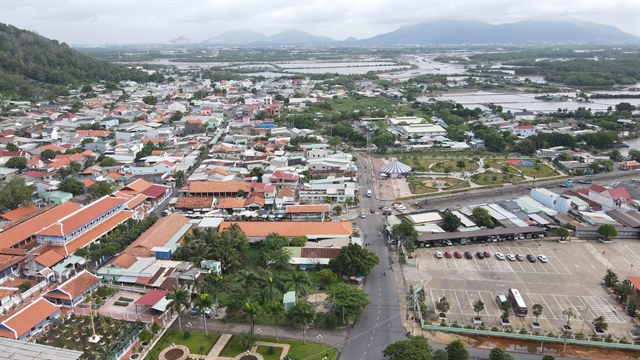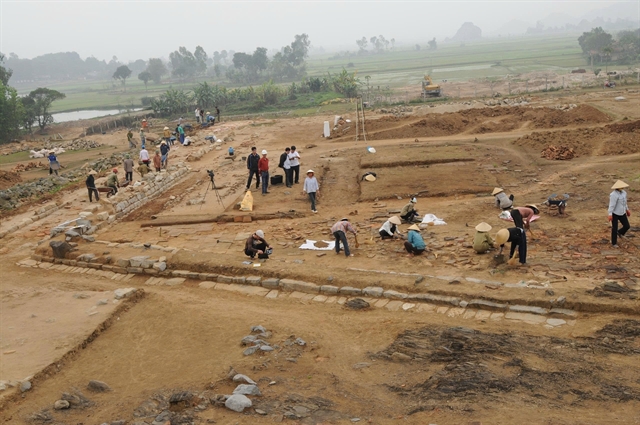 Society
Society

 |
| A view of Trần Duy Hưng underpass on Thăng Long Boulevard in Hà Nội. VNA/VNS Photo |
HÀ NỘI — According to the Hà Nội Capital’s Master Plan, with a vision toward 2050, Hà Nội will become a global, green, smart, peaceful and prosperous city with an average Gross Regional Domestic Product (GRDP) per capita of US$45,000–46,000 per year.
By 2030, Hà Nội is aiming to become a green city with deep international integration, high competitiveness and development on par with the capitals of developed nations in the region.
The total natural area covered by the plan is approximately 3,360 square kilometres.
Decision No 1569, which approves the plan for the period 2021–2030 and on to 2050, has been signed by Prime Minister Phạm Minh Chính.
In terms of Hà Nội’s geographical boundaries, the city borders Thái Nguyên and Vĩnh Phúc provinces to the north, Hà Nam and Hòa Bình provinces to the south and southwest, Bắc Giang, Bắc Ninh, and Hưng Yên provinces to the east and Hòa Bình and Phú Thọ provinces to the west and northwest.
The capital will also act as a driving force for the development of the Red River Delta region, serving as a growth hub and a leader of the national economy. It will also be a major centre for finance, education, healthcare, science, technology and innovation.
The city also aims to achieve a GRDP per capita of $13,500–14,000, which is 3.4 times higher than in 2020. The city is expected to contribute 15–16 per cent of the country’s total gross domestic product (GDP). By 2050, Hà Nội’s GRDP per capita is expected to rise to $45,000–46,000.
The population is projected to reach 10.5–11 million permanent residents, along with an additional 1.45 million temporary residents. The Human Development Index (HDI) is targeted to reach 0.88–0.90, reflecting significant progress in quality of life and human development.
In terms of environmental goals, the city aims for a forest coverage rate of 6.2 per cent. All household solid waste will be sorted at the source, collected and treated according to standards.
The collection and treatment rate for urban domestic wastewater is targeted at 70 per cent. All industrial parks and clusters will be equipped with centralised wastewater treatment systems that meet environmental standards.
The master plan identifies five key missions, including environmental and landscape protection, urban and rural development, economic development, cultural and social development and advancements in science, technology and innovation.
The plan also outlines four strategic breakthroughs. These include reforms in institutional structures and governance, development of modern and synchronised infrastructure with enhanced connectivity, promotion of high-quality human resources and scientific innovation and sustainable urban development, with a focus on environmental protection and preserving cultural landscapes.
Hà Nội’s growth will focus on developing key sectors, including services such as trade, tourism, finance, banking, insurance and logistics. Other areas of focus include industry and construction, agriculture, forestry, fisheries, the digital economy, education, healthcare, public welfare and national security.
Specifically, the city is positioned as the national financial centre, aiming to develop financial services of regional and international standards. It seeks to advance comprehensive, modern financial, banking and insurance services, integrated with the development of domestic and international commodity trading hubs.
This vision is built on high-speed, secure IT infrastructure, a robust digital transformation ecosystem, multimodal connectivity and cashless payment systems. A financial and banking hub is planned for Hoàn Kiếm District.
After 2030, an additional complex for financial, banking, trade and international services will be established along the Nhật Tân - Nội Bài corridor.
 |
| Hoàn Kiếm Lake in downtown Hà Nội. — VNA/VNS Photo |
Hà Nội is also envisioned as the leading centre in the Red River Delta for industries such as semiconductor microchip manufacturing, artificial intelligence, precision mechanics and automation, electronic devices, new and high-tech materials, pharmaceutical processing, chemical pharmaceuticals, cosmetics, biotechnology and high-tech agricultural and food processing.
The city will play a significant role in industrial development corridors, including Hà Nội - Hải Phòng, Hà Nội - Bắc Ninh - Hải Dương -Quảng Ninh, along with Hà Nội - Vĩnh Phúc - Phú Thọ, Hà Nội - Lạng Sơn.
In terms of urban development, Hà Nội plans to establish new districts by 2030, including Gia Lâm, Hoài Đức, Thanh Trì, Đông Anh and Đan Phượng/Mê Linh. Additional urban areas are planned, such as Chúc Sơn, Quốc Oai, Phúc Thọ, Tây Đằng, Tản Viên Sơn, Liên Quan, Thường Tín, Kim Bài, and Vân Đình.
The plan identifies five key growth corridors to guide development such as the Red River Corridor, the West Lake–Cổ Loa Corridor, the Nhật Tân–Nội Bài Corridor, the West Lake–Ba Vì Corridor and the Southern Corridor.
The city will also develop five socioeconomic regions, including the central urban region, the eastern region, the southern region, the western region and the northern region.
By implementing these initiatives, Hà Nội aims to achieve sustainable urban development, solidify its role as a global city, and lead in innovation, environmental protection and socioeconomic progress. — VNS




